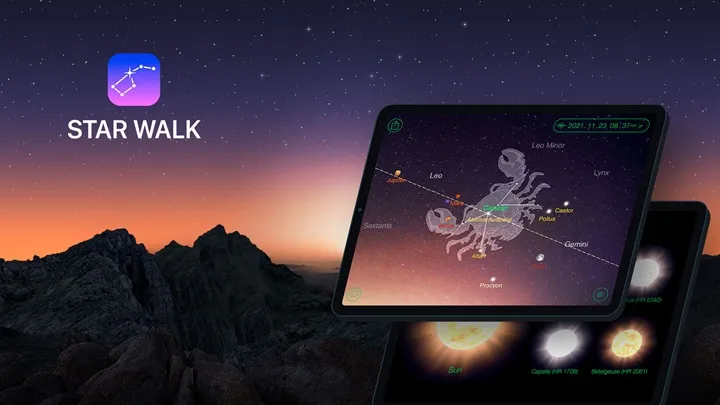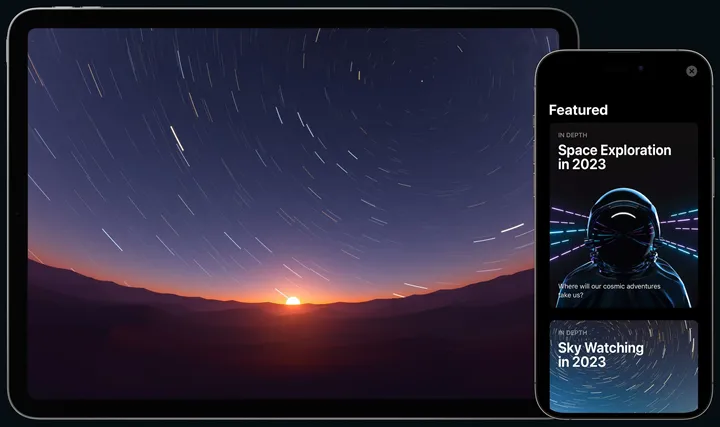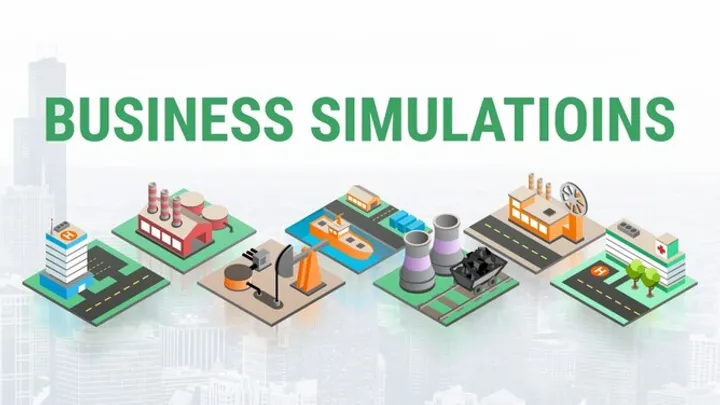Looking at the night sky has always inspired curiosity, but in 2025, exploring the stars has never been easier. With powerful smartphones, AR capabilities, and AI-driven astronomy apps, anyone can become an amateur astronomer. These apps don’t just point out constellations—they simulate galaxies, explain celestial events, and even notify you of the next meteor shower.
Today’s astronomy apps are educational, interactive, and immersive, designed for students, hobbyists, and even professionals. Whether you’re a beginner wanting to recognize Orion’s Belt or a stargazer planning astrophotography shots, the right app can turn your smartphone into a powerful telescope guide.
In this article, we’ll explore the top 10 astronomy apps in 2025 that bring the universe to your fingertips. Each one stands out for unique features, from real-time star tracking to VR-based space tours.
1. Star Walk 3 – The Ultimate Stargazing Companion
Star Walk has been a trusted astronomy app for years, and its 2025 version, Star Walk 3, takes mobile stargazing to the next level.
Why It’s Special
Using augmented reality, Star Walk 3 lets you point your phone at the sky and instantly identify stars, planets, and constellations. It overlays names and trajectories directly on your screen, making it perfect for both beginners and advanced stargazers.
Key Features
- Real-time AR sky maps
- Daily astronomical event calendar
- Detailed information about stars and planets
For learners who want a simple yet visually stunning guide to the night sky, Star Walk 3 is unbeatable.

2. SkySafari 8 Pro – Professional-Grade Astronomy in Your Pocket
SkySafari has long been a favorite among serious astronomers, and in 2025, its eighth-generation release offers unparalleled detail.
Advanced Functions
SkySafari 8 Pro contains an enormous database of stars, deep-sky objects, and satellites. It integrates with telescopes, allowing remote control right from your phone.
Highlights
- Professional-grade star catalogs
- Telescope integration
- Detailed planetary simulations
For serious stargazers or those pursuing astrophotography, SkySafari 8 Pro is like carrying a professional observatory in your pocket.
3. Stellarium Mobile Plus – The Open-Source Classic Evolved
Stellarium started as desktop software, but Stellarium Mobile Plus brings its legendary accuracy to smartphones. By 2025, it has evolved with AI-powered sky prediction tools.
Why It’s Loved
The app renders the night sky with incredible accuracy and realism. Its open-source roots ensure constant updates from a passionate astronomy community.
Features
- High-quality star and constellation visuals
- Satellite and comet tracking
- Educational mode for beginners
If you want scientific precision combined with artistic beauty, Stellarium Mobile Plus is a must-have.
4. SkyView AR – Augmented Reality for the Stars
SkyView AR has built its reputation on making astronomy fun and accessible with AR technology. In 2025, it continues to help beginners discover the universe effortlessly.
Easy to Use
Just point your camera at the sky, and the app will display planets, stars, and constellations. It also sends reminders for upcoming celestial events like eclipses and meteor showers.
Why It Works
- Simple interface for kids and adults
- AR overlays for intuitive learning
- Celestial event notifications
SkyView AR is ideal for families and casual stargazers who want to explore the sky without technical jargon.
5. NASA App – Space Exploration at Your Fingertips
The official NASA app has evolved into one of the most comprehensive astronomy resources. In 2025, it not only delivers news but also integrates interactive space simulations.
What You Get
Users can watch live streams from the International Space Station, explore 3D spacecraft models, and receive real-time mission updates.
Core Features
- ISS live streams
- Mission trackers
- Educational multimedia content
For those fascinated by space exploration, the NASA app provides authoritative and inspiring resources.
6. Sky Guide – Beautifully Designed Stargazing App
Sky Guide combines accuracy with aesthetics. Known for its stunning visuals and intuitive design, it has become one of the most loved astronomy apps by 2025.
Visual Excellence
Sky Guide presents stars, constellations, and deep-sky objects in beautifully rendered graphics, making stargazing a visually rich experience.
Special Features
- Notifications for rare events like supernovae
- Apple Watch and wearable integration
- Deep-sky catalog with images
Sky Guide is perfect for those who want science and beauty in one elegant package.

7. Night Sky 12 – Immersive AR Astronomy
Night Sky has consistently pushed the boundaries of AR in astronomy, and the 2025 version (Night Sky 12) includes VR modes for immersive space exploration.
Immersive Learning
It allows users to virtually “walk” through constellations and galaxies, making it both educational and entertaining.
Key Features
- AR constellations in 3D
- VR tours of the solar system
- Sky blending mode for day-to-night transitions
Night Sky 12 is excellent for educators, students, and anyone who wants to explore space interactively.
8. Sky Map by Google – Simple Yet Reliable
Google Sky Map has been around for years, and in 2025, it remains one of the simplest ways to identify celestial objects.
Why It’s Useful
Unlike heavy professional apps, Sky Map is lightweight, user-friendly, and completely free. It’s great for those just getting started.
Features
- Real-time star and planet identification
- Smooth navigation with phone sensors
- Offline mode for remote locations
Google’s Sky Map may not be the most advanced, but it’s reliable and beginner-friendly.
9. Solar Walk 3D – Explore the Solar System in Depth
Solar Walk 3D specializes in interactive visualizations of our solar system. In 2025, it has expanded with detailed models of new space missions.
Interactive Exploration
The app allows users to zoom into planets, moons, and spacecraft, with 3D animations explaining their features.
Highlights
- Realistic 3D planetary models
- Historical space mission recreations
- VR compatibility
Solar Walk 3D is perfect for learners who love exploring space through stunning visuals and interactive storytelling.
10. Star Chart VR – Virtual Reality Astronomy
Star Chart VR represents the future of astronomy education. By 2025, it offers fully immersive VR environments that let you experience the universe as if you were floating in space.
Why It’s Revolutionary
Instead of just pointing your phone at the sky, you can put on a VR headset and walk among the stars, planets, and galaxies.
Key Features
- Fully immersive VR environments
- Interactive star and planet tours
- Educational voice guides
For anyone who wants to feel like an astronaut, Star Chart VR delivers a next-level astronomy experience.
Conclusion
Astronomy apps in 2025 are no longer just star maps—they’re immersive, educational, and interactive gateways to the universe. From the professional-grade detail of SkySafari 8 Pro to the immersive VR of Star Chart VR, these apps cater to every kind of stargazer.
Whether you’re a casual sky-watcher or an aspiring astronomer, these tools make it easier than ever to explore the cosmos. With AI, AR, and VR blending into astronomy education, the stars are truly within your reach.

















